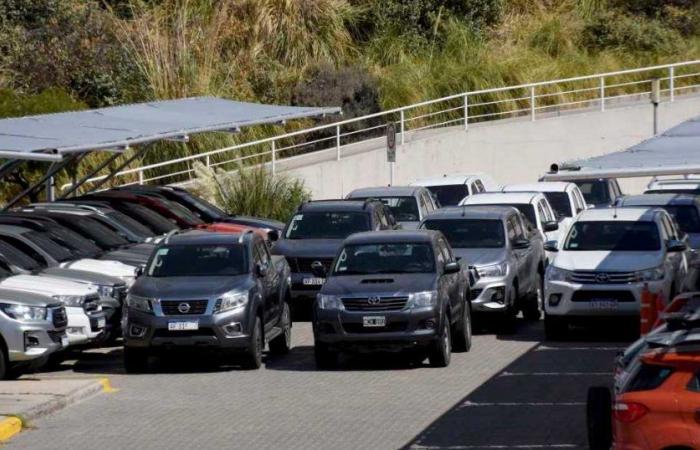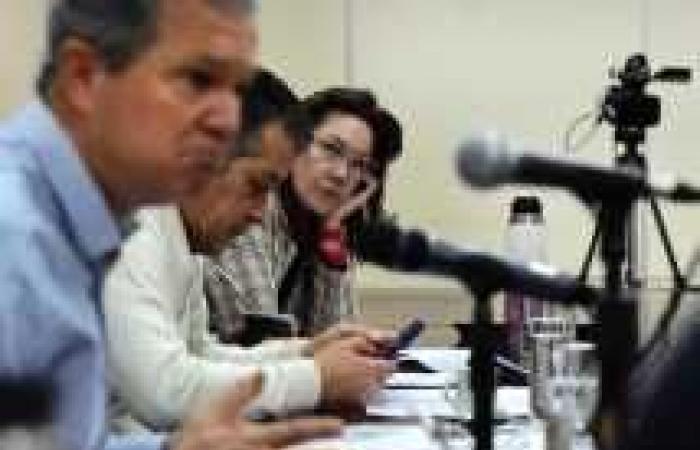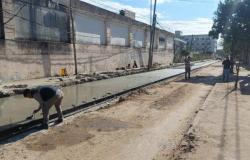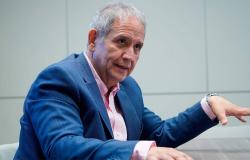Deputy Andrés Blanco (PTS-FIT) said that the Neuquén education worker “He does not have the privileges that exist in this House.”
“Here there are gasoline vouchers, there are travel expenses, block expenses and almost 4 million in per diem and from here we want to discuss with the finger how to solve a problem considered an expense,” he remarked when he found out that there is a project to reward teachers’ presenteeism.
The phrase generated discomfort among his peers and revealed the “advantages” that the Legislative Branch has compared to sectors that depend on the Executive Branch, not to mention the salary level that the Judicial Branch has.
Since 2003, by Law 2395, the autarky of the Legislative Branch was adopted with the resources of federal co-participation. From the total amount prior to distribution to the municipalities, 18% must be deducted to finance the Judicial Branch and 7.5% for the Legislative Branch. This last percentage was reduced in September of last year, when there was a kind of co-government between the outgoing Omar Gutiérrez and the incoming Rolando Figueroa.
It was disguised as the Neuquén Budget Stabilization Fund (FEPN), aimed at mitigating variations in the financial years of the three branches of the State. Instead of allocating 7.5% of the federal contribution for this power, it was reduced to 6%. As the Neuquén Association of Legislative Employees raised a cry, a clause was included so that it would not lack money in case of facing salary increases.

This fund, made up of the 1.5% that they take from the Legislature and another 1.5% that the Executive puts in, is administered by the Ministry of Economy, which has the last word when the Judiciary demands more funds (it is relatively autonomous since it is allocates 18% of the federal co-participation which, since it is low, is never enough).
On the date the change was sanctioned, deputy Lorena Parrilli (FdT) warned that The measure cuts the budget of the Legislative Branch, estimating, according to its calculations, at 2.3 billion pesos at values of the financial year that was in force.
The administration of Vice Governor Gloria Ruiz started on the wrong foot for “the caste”, that is, the traditional politicians who enjoyed “advantages” without giving explanations.
In Marcos Koopmann’s administration there was a measure that was resisted but maintained due to the financial knowledge that the vice-governor had. He resolved that the expenses that were disguised as travel expenses should be submitted with invoices in order to be able to deduct them from the income tax returns. This created a problem for legislators because they had to use those funds for what they were intended for, pay expenses when they made trips, and therefore they were no longer “freely available.”
High-end vehicles
Upon assuming ownership of the legislature, the former mayor of Plottier – accustomed to weak budgets – removed the veil on one of the advantages that provincial deputies had: high-end vehicles.
As soon as he arrived at the office, he discovered that officials, advisors and legislators had a total of 48 inherited vans at their disposal. It was a fleet of 12 4×4 double cabin trucks, 24 4×4 trucks and 12 units used for transportation, cargo and mobility. He paralyzed them and announced that he was going to donate them to organizations such as the police or the Ministry of Health. He drew attention to the fact that some trucks had the jack in the back where trailers like boats are hooked.
Some vehicles were left for use by the political plant and one per block was allocated for legislators.
According to the latest report from the Neuquén Social Security Institute, there are 628 legislative employees without including the elected political staff, that is, the 35 deputies with four advisors each.








